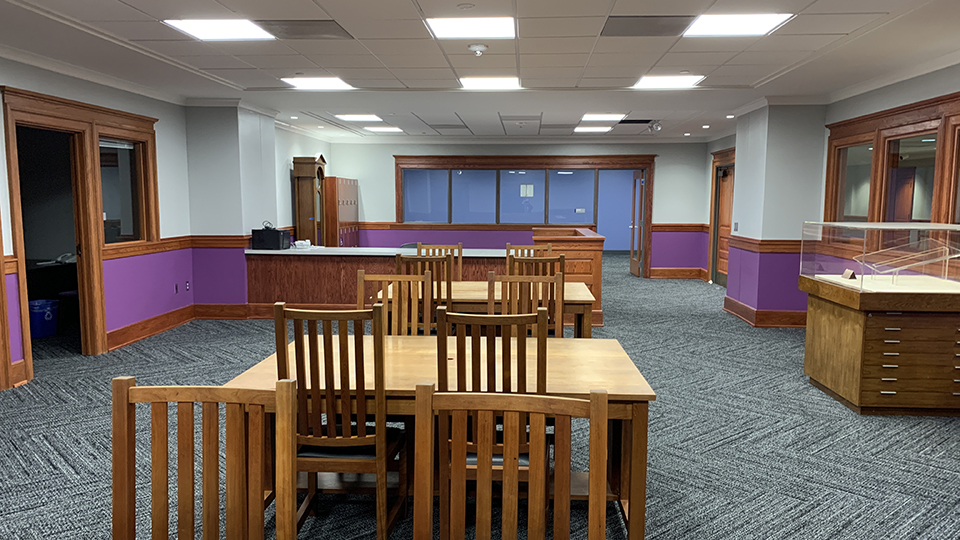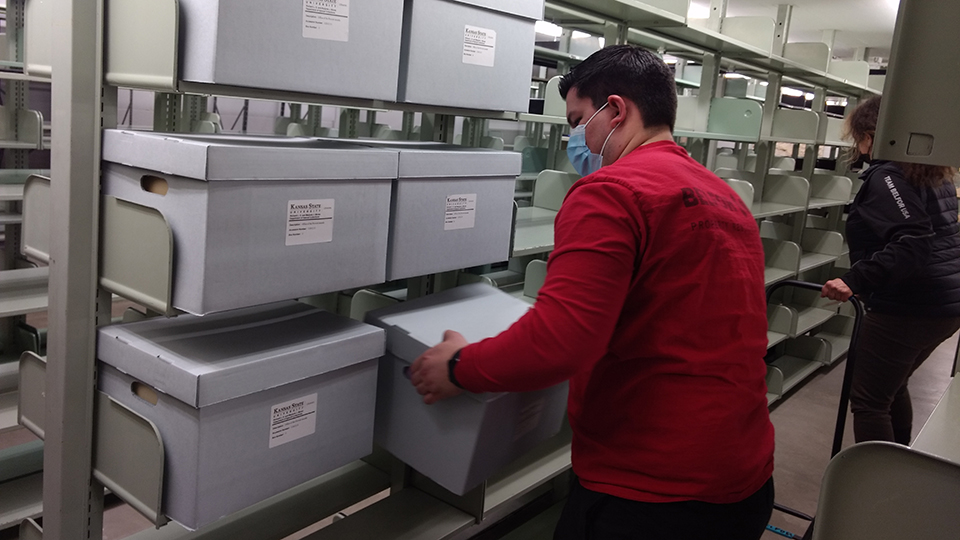Inside the K-State archives: Restoring the university’s special collections after the 2018 library fire
Note: Special thanks to K-State’s Cliff Hight (head of special collections) and Helena
Egbert (processing archivist) for writing this article.
When fire alarms sounded in Hale Library on May 22, 2018, no one in the Richard L.D. and Marjorie J. Morse Department of Special Collections thought it would be over three years before they would be working in the building
again. But that reality began to set in as smoke billowed from the building while
firefighters from multiple departments in the area worked for hours to extinguish
the blaze.
Thankfully, the department’s holdings, which include resources that document the collection’s
strengths of university history, cookery, consumer movement and Kansas life and culture, were almost entirely spared of damage from this disaster. There still was much work
to do, though.
In the weeks after the fire, it became clear to department personnel that collections
needed to be moved offsite and cleaned. Working with Belfor Property Restoration, an international disaster response company, people in the department guided the
cleaning and rehousing of materials removed from Hale Library. Due to space constraints
and other logistical challenges, the department was unable to make all its materials
available. Instead, they were allowed to use a room in Bluemont Hall as a temporary
reading room with a small portion of frequently used resources to assist researchers.
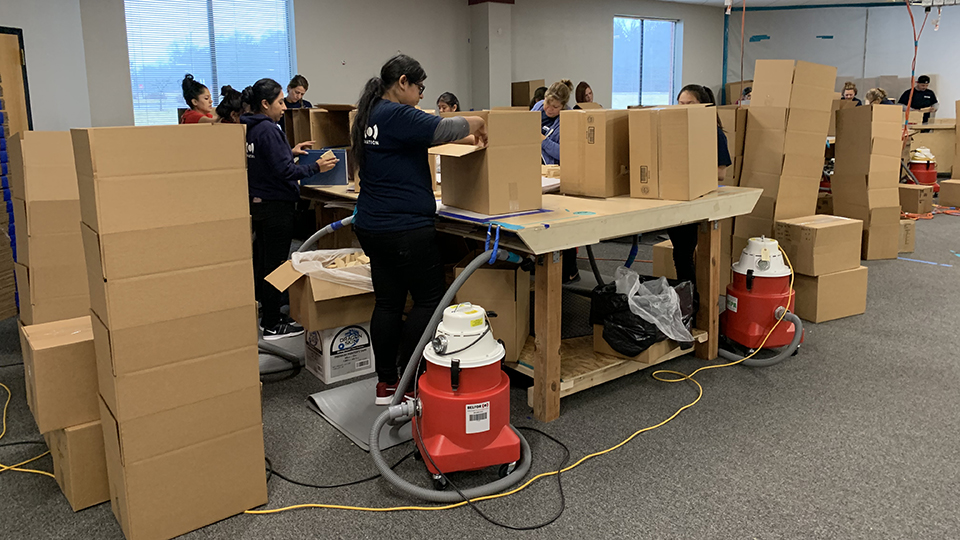
Meanwhile, Belfor and department personnel continued working together offsite to clean
and store collections until renovations to Hale Library were complete. In April 2021,
the time came to begin returning materials to the building. Helena Egbert, processing
archivist, coordinated this effort with Belfor and department personnel.
The Belfor crew assisted K-State staff with relief efforts over the three and a half
years. It was made up of hundreds of people. Their work changed over the course of
the disaster recovery, but throughout they did most of the more physically demanding
tasks. Many employees came and went over the years. Some stayed for long stretches,
and a few of them were here for the entire duration of disaster recovery. None of
Hale Library’s recovery would have been possible without their hard work. Additionally,
Libraries staff and Belfor crew members developed friendships in the process.
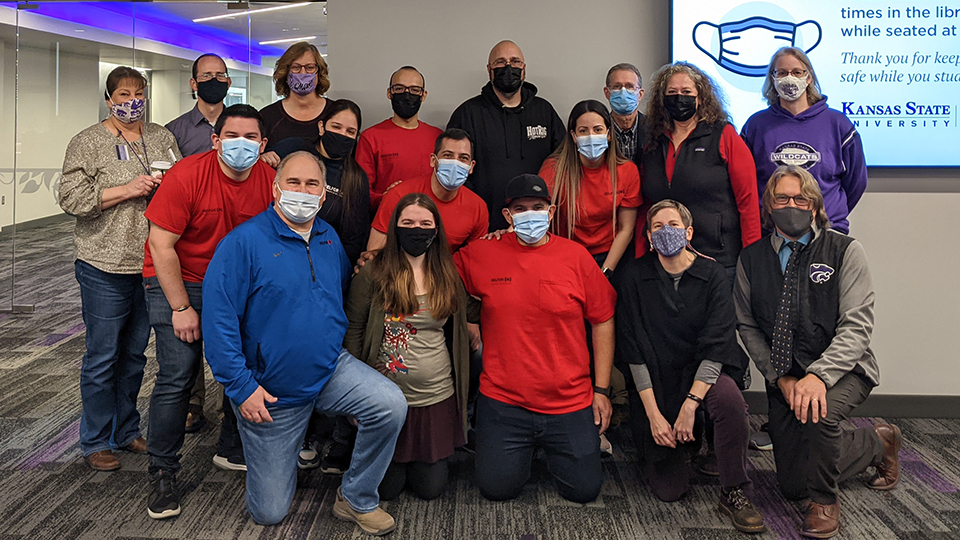
The work of returning archival materials to Hale Library differed from the return
of books to the general collection. Unlike books, archives often are grouped together
by collections or series of records. Collections normally are materials assembled by a person or organization. They can vary in quantity and
are predominately stored in boxes. Unlike traditional library books that are arranged
in call number order, boxes of archival materials can be stored separately to better
manage space.
Archivists describe materials in “finding aids” (similar to a library catalog record)
and often group related materials together even if they are physically separated.
This approach enabled the department to store collections differently than it had
before the fire.
Other factors affected the use of space, such as the replacement of some of the shelving
that was damaged as a result of the fire. Also, staff had to shuffle other shelves
around to accommodate the various sizes of the collections. These efforts improved
efficiency within the storage space.
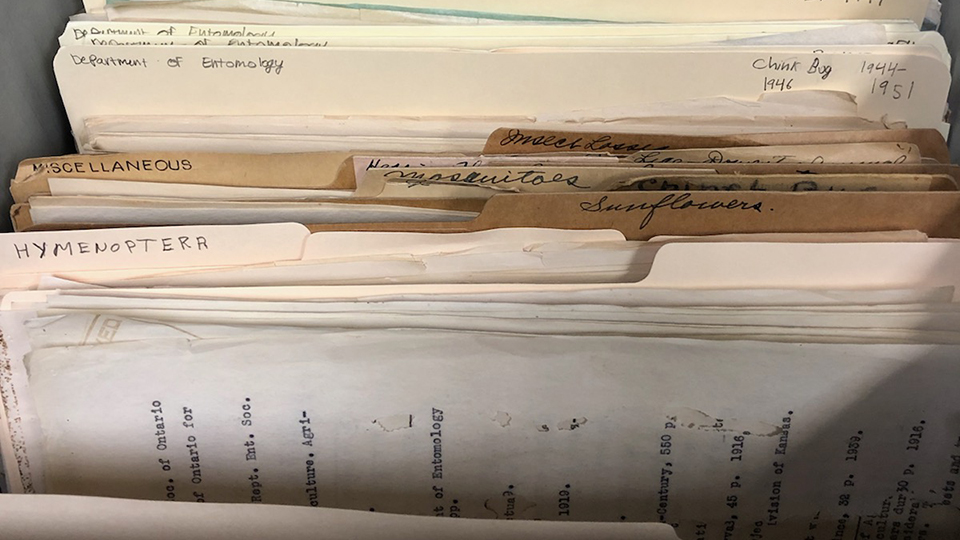
As part of the cleaning process of archival collections, Belfor reboxed the department’s
holdings. Part of this work included transferring labels and other identifying information
from pre-fire boxes to new ones through a varied process that is an archives version
of the children’s game of “telephone.” One of the drawbacks of this approach was that
information did not always faithfully get to the new box. But, more on that later.
Last April, Belfor began delivering pallets of archival boxes. On average each pallet
had 30 to 40 regular sized boxes that measure about one cubic foot (12” x 15” x 10”).
Under Egbert’s direction, people in the department labeled as needed boxes ready to
be shelved, while the Belfor crew moved them to the designated storage spaces. After
repeating this process for many months and making tweaks along the way to adapt for
changes in box sizes and other factors, staff were able to get all the archival collections
back in their proper storage locations. Many people in the department and Libraries
contributed to this success, including Egbert’s three processing student employees
who worked for many hours. Without their support, it would have taken much longer.
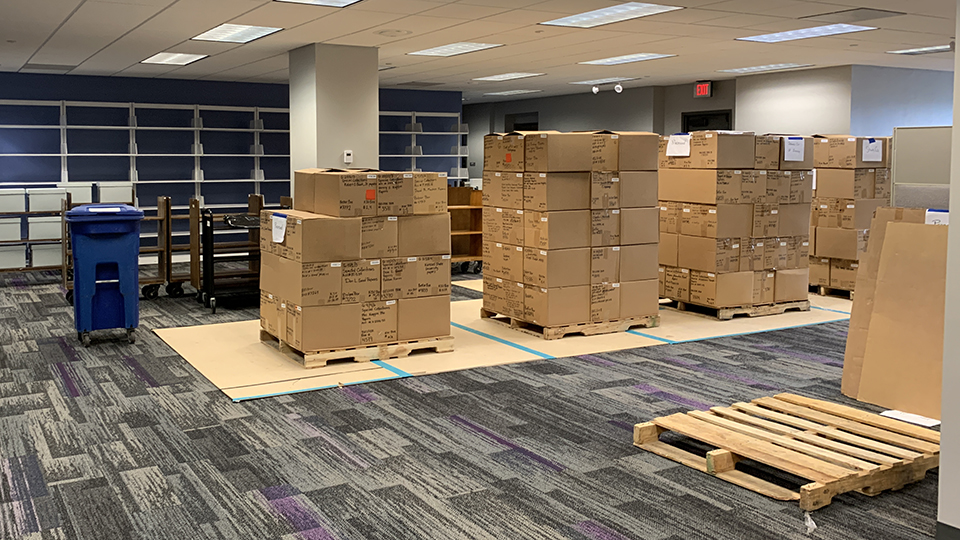
Speaking of more work, successfully bringing collections to Hale Library was only
one phase of this significant project — a visibly necessary component, though. The
next step is happening as you read this. The department is adding location information
for each of these boxes to its collection management system. Ensuring accuracy of
this information in the database will allow the university to connect researchers
with relevant resources. For example, someone may want to look at items from the Jack Hartman papers (K-State basketball coach, 1970–1986) and can use the archival description to identify
which portions are of interest. Then, staff can locate the appropriate boxes and prepare
them for use.
Regarding additional work remaining on this project, the unavoidable consequences
of “archival telephone” are requiring further efforts that will continue this year. Many
times, the information transfer process worked without a hitch. In other cases, it
led to errors or there were limited details available before the fire. Materials like
these will require further research and sleuthing in other department records to straighten
out any issues. A final task will be reviewing collections to ensure accuracy and
ease of use before providing them to those researching in the collections.
Despite the work ahead, the department is pleased to be back in Hale Library and providing
access to archival collections. As we continue to return to some of the department’s
regular work, these additional components of wrapping up disaster recovery require
further labor. As staff integrate these varying tasks into their daily activities,
they look forward to the time when nearly all the archival collections will be available
to people. If reading this has piqued your interest in learning more about the archival
collections, check out the website or email libsc@ksu.edu to learn more about how to access them.
